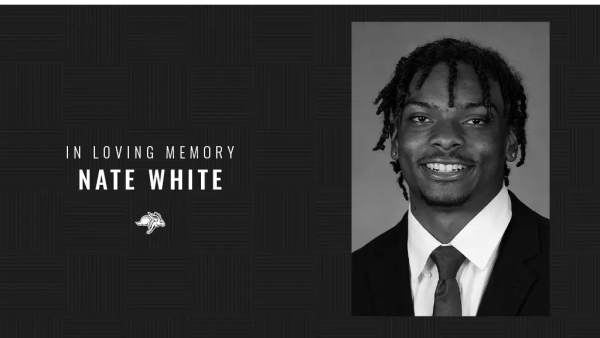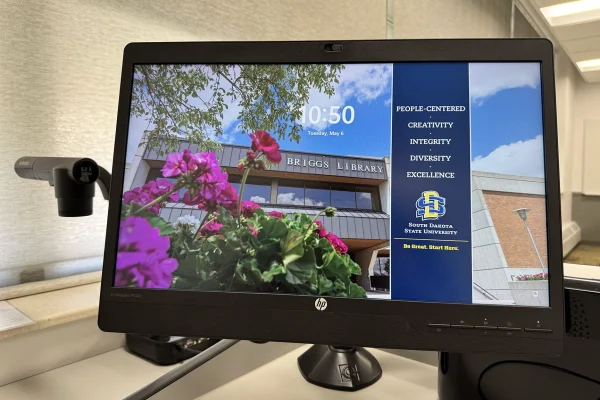Diamond coaches differ in debut year
March 27, 2012
Their offices sit right next to each other in the HPER building, offering the first of many parallels in a new chapter of SDSU athletics.
In a simple way, it’s the established and the up-and-coming. The veteran who has seen it all and the nervous rookie, who is running a program for the very first time. Both have been asked to take their programs to new heights, and both have accepted. The excitement and enthusiasm, the uncertainty and anxiety, all combine to give two coaches a common experience that has done nothing but strengthen both.
Baseball head coach Dave Schrage came to the SDSU baseball program in August after a year away from collegiate coaching. Softball head coach Kim Aggabao took the helm for the Jackrabbit softball program in July, coming to Brookings from San Diego, Calif. Schrage just posted his 600th career win this past weekend, while the job at SDSU marks the first head coaching opportunity for coach Aggabao. Both will have to overcome the adversity that change can bring along with it.
Having coached at an institution with so much tradition such as the University of Notre Dame, Schrage’s perspective is strikingly down to earth regarding the changes from one institution to another.
“It doesn’t matter where you coach. Every student-athlete has that will to win. It’s what makes coaching enjoyable,” he said.
The will to win amongst student athletes is what makes it possible for two new coaches to come into two established programs and mold championship teams out of them. Without the competitive spirit, trust amongst new coaches and players would never get off the ground.
“The upperclassmen support has been huge,” Aggabao said. “The girls have helped so much. Their cooperation has allowed me to bring my own energy into the team, and it’s made the transition that much easier.”
Coming to a place like Brookings from towns such as South Bend or San Diego poses its own challenges for a new coach. Things like weather, culture, and student support vary widely from one campus to the next. That being said, a common thread amongst the so called “Mid-Majors” of college athletics exists. Having played and or coached years ago at universities such as Creighton (Schrage) and San Diego (Aggabao), an invaluable familiarity with the plight of smaller schools exists for both coaches.
“We know we are probably not going to be landing any of the top 100 players in the nation at schools such as SDSU,” said Schrage. “So we have to say, ‘Okay, we’re going to look at the next echelon of players, the kids that have talent, but also have room to be developed into the players we want for our program. And then it’s our job to mold them into the right type of student athlete for that institution.’”
It’s the players and the chemistry that they have with each other and their coaches that breeds success on and off the field. No matter if you’re a first year coach or if you’ve been at the helm for 24 years, the relationships that are built when you step into a new program can be the difference between a successful tenure and a short stop along the coaching carousel.
“Every year as a coach, you learn,” said Schrage. “Players need their self-esteem built up constantly. That’s our job; to always learn how to motivate players and translate that into winning. The day I stop learning is the day I should stop coaching.”
It’s safe to say that it takes a different kind of person to be a coach. Whether a veteran or a novice, no matter the personality, they come from the same cut of cloth. A love of the game and a sincere love for the lives of the people they teach work to construct an outlook on life that is unique amongst professionals. Dave Schrage and Kim Aggabao are no exceptions.




















